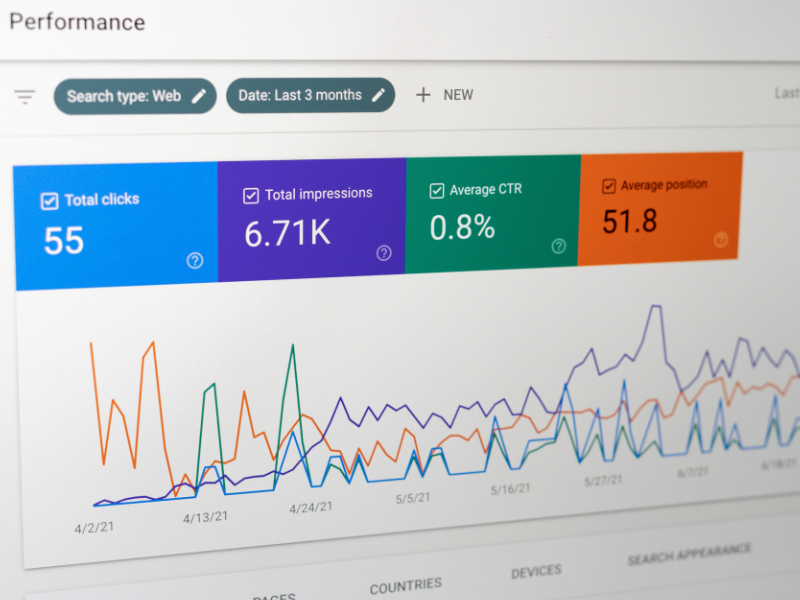In the digital age, where online activity can make or break a business, knowledge in Search Engine Optimization (SEO) is critical. Implementing effective SEO practices can elevate your new business to new heights by increasing visibility, organic traffic leading to promotion, and ultimately promotion.
In this guide, we’ll delve into the best SEO practices and how to implement them.
Keyword Research
It is the foundation of effective SEO. Identify relevant keywords and phrases that potential customers can use to search for your products or services. Tools like Google Keyword Planner, SEMrush, and Ahrefs can help identify potential keywords. Optimize your content with these keywords, including meta tags, titles, and body text to increase search visibility.
Let’s delve into each tip with a professional and comprehensive approach to enhancing your keyword research and optimization strategy:
1. The Long-Tail Keyword Strategy
Long-tail keywords are extended search terms that are more specific and comprehensive compared to broad keywords. It usually contains three or more terms and applies to users who go further in their decision-making process. For example, a user searching for “best wireless noise canceling headphones under $100” has a clear idea and is likely ready to buy. Adding long-tail keywords to your strategy helps capture a more targeted audience, resulting in higher conversion rates and better engagement.

A study by Ahrefs found that long-tail keywords (with low search volume) make up 92.42% of all keywords.
2. Success through Competitor Analysis
Competitor analysis involves researching the keywords that your competitors are ranking for and identifying the content that drives their success. This approach provides valuable insight into the processes at work in your industry. Tools like SEMrush and Ahrefs allow you to analyze your competitors’ organic and paid keywords, their backlinks, and their top-performing content. By understanding their keyword focus, you can identify gaps in your strategy and identify opportunities to create unique, valuable content that sets your website apart.
SEMrush found that analyzing keyword gaps (keywords your competitors rank for but you don’t) can lead to a 2.8 times increase in traffic growth.
3.Crafting Precise Content
User intent refers to the purpose behind a user’s search query. Knowing how to recognize and align your content with the user’s intent is critical to effective keyword design. Perspectives can be categorized as informative, directive, or communicative.
For example, a user searching for “how to clean suede shoes” intends to find instructional content, while someone searching for “buy Nike running shoes” is likely ready to make a purchase. Understanding and addressing user intent enables you to tailor your content to meet their specific needs, resulting in higher engagement and better user satisfaction.
According to a study by Nielsen Norman Group, users read only about 20-28% of the text on an average webpage. Well-structured, scannable content can improve user engagement.
4. Google’s Autocomplete and “People Also Ask”: Insider Insights
Google’s autocomplete feature provides users with suggested search queries as they type in. These recommendations are based on popular and trending research, providing valuable insight into user interests and questions about your services. Similarly, the “Some People Ask” box displays related questions that users frequently search for. Analyzing these factors helps guide your content creation and keyword optimization efforts and identify user questions you hadn’t anticipated.
The expanded version now displays up to 12 Google search predictions (instead of 10) right below the search bar. And as mentioned above, you can now find a People also ask section displaying the top three most asked questions related to the search term. Below is a People also search for area that shows similar results that others have searched for based on Google search trends.

5. Local SEO Opportunities
Local SEO involves optimizing your website to target users in a specific location. For businesses with physical location or local customers, the inclusion of location-specific keywords is important. This includes using city names, neighborhoods, and other location cues in your content. Local keywords help your website appear in location-based searches, increasing its visibility to users searching for nearby services or products.
Quality Backlinks: Building Authority
In the complex world of SEO, quality backlinks stand as one of the most important factors that can boost your website’s search engine rankings. However, it’s not just about the number of backlinks; It’s about the power and value they add to your website. In this comprehensive guide, we’ll delve deeper into the art of building authority through quality backlinks, exploring why it’s important and providing actionable strategies to incorporate this SEO practice well.
Here’s how Quality Backlinks Shape SEO Authority:
1. Identify High-Quality, Relevant Sources
Start your journey to building backlinks by identifying authentic and relevant sources in your industry. Look for websites that are considered leaders in your niche, have a strong online presence and high domain authority. These sources usually provide meaningful benefits for your backlink profile. Remember, context matters.
A backlink from a site with your affiliate content carries more weight in terms of SEO and user engagement than a link from an unrelated site.
2. Create Exceptional Content
Creating unique content is the cornerstone of your backlink strategy. High quality, informative and valuable content naturally attracts links from other websites. If your content meets a specific need or provides unique insight, other bloggers, influencers, and industry experts are more likely to cite it in their work.
Try to keep your content original, deep and readable. Include images, data, and examples to increase value and shareability.
3. Guest Posting
Guest posting involves creating content for other websites in your industry and including a link back to your site within the content or author bio. Choose websites with a strong reputation and an audience that aligns with your target demographic. Craft guest posts that provide genuine value to their readers while subtly showcasing your expertise.
When reaching out for guest posting opportunities, be professional and succinct in your pitch. Highlight the value your content can bring to their audience and how it complements their existing content.
Here is a guest post example that Semrush’s Marcus Tober contributed to Adweek:

4. Broken Link Building
Broken link building is a creative way to secure backlinks. Identify authoritative websites in your niche that have broken outbound links. Offer to replace those broken links with links to your own high-quality content that’s relevant to the original link’s intent.
This approach benefits both parties: you help the website owner fix their broken links, and you gain a valuable backlink in return.
5. Outreach and Relationship Building
Building relationships within your industry is essential for successful backlink acquisition. Engage with influencers, bloggers, and experts on social media platforms. Share their content, comment on their posts, and provide thoughtful insights.
Over time, these interactions can open doors for collaboration. When you have high-quality content to share, you can approach these individuals with the intent of contributing value to their audience through guest posts or collaborations.
6. Create Link-Worthy Resources
Creating comprehensive, link-worthy resources positions you as an authoritative source in your field. Craft in-depth guides, infographics, whitepapers, or case studies that offer valuable insights, statistics, or solutions to common problems. Such resources become go-to references for bloggers and websites seeking authoritative content to link to.
Promote these resources across your platforms and reach out to websites that might find them relevant. The more valuable your content, the more likely it is to attract natural backlinks.
Local SEO
Local SEO represents the art and science of fine-tuning your online presence to be more relevant to local customers and increase your visibility in nearby searches. As search engines prioritize localized results to match the user’s intent, the importance of local SEO increases exponentially. This strategic effort involves carefully applying a variety of resources to ensure your business is highly visible in local search results and map listings.
Mastering Local SEO
- Optimize Google My Business (GMB): Claim and optimize your GMB listing with accurate business details, high-quality images, and engaging posts to enhance your local visibility.
- Leverage Online Reviews: Encourage and respond to reviews across platforms. Positive reviews foster trust, while timely responses exhibit your commitment to customer satisfaction.
88% of consumers trust online reviews as much as personal recommendations. (Source: BrightLocal) – BrightLocal’s Online Reviews Survey
- Local Keyword Optimization: Integrate location-specific keywords naturally into your website’s content to capture local search intent effectively.
- NAP Consistency: Ensure consistency in your business’s Name, Address, and Phone number (NAP) across all online platforms, including your website and directories.
- Structured Data Markup: Implement schema markup on your website to provide search engines with vital information about your business, increasing your chances of appearing in local search results.
How Starbucks Conquered Local SEO
- Localized Content: Starbucks tailors its content to local interests and events, creating a deeper connection with its community.
- Hyper-Targeted Advertising: Starbucks uses geo-targeted ads to attract nearby customers, increasing foot traffic and brand loyalty.
- GMB Dominance: Starbucks maximizes GMB features like posts and Q&A to engage with customers and control its online narrative.
Brand SERP Optimization: Commanding Your Brand’s Search Results
Brand SERP optimization involves strategically managing and influencing search engine results pages to present your brand’s content in the best and most accurate light possible. It goes beyond the usual SEO practice by focusing on increasing your brand’s visibility, credibility and reputation directly on the SERP. The goal is to create a cohesive and appealing online brand image that aligns with your business objectives and resonates with your target audience.
Practical Tips for Effective Brand SERP Optimization
1. Monitor and Manage Reviews
Online reviews play a pivotal role in shaping your brand’s perception. Regularly monitor and respond to reviews on platforms like Google My Business, Yelp, and industry-specific review sites. Address both positive and negative feedback professionally to demonstrate your brand’s commitment to customer satisfaction.
2. Create High-Quality Content
Create engaging and informative content that reflects your brand’s knowledge and values. Consistently publishing valuable articles, blog posts, videos, and other multimedia content can help establish your brand as a trusted industry brand, and make your chances of appearing in relevant search results.
3. Optimize Social Media Profiles
Your social media profiles are often among the top search results for your brand. Make sure your profiles are complete, consistent, and consistent with your brand identity. Post interesting content regularly and engage with your audience for a better online presence.
Case Study: Successful Brand SERP Optimization:
Example: Nike’s Dominance of Brand SERP
Nike’s meticulous approach to Brand SERP Optimization has secured its position as a prime example of effective strategy.
- Visual Consistency: Nike maintains consistent branding across all platforms, ensuring a uniform visual identity.
- Engaging Social Presence: Active engagement on social media platforms has helped Nike dominate the social media snippets on the SERP.
- Content Leadership: Nike’s content marketing strategy ensures that they answer users’ queries and establish themselves as authorities in their field.
SERP domination goes beyond ranking your own website in the SERPs to being mentioned in as many high-ranking pages in the SERPs as possible. While no brand is at the top in the following screenshot, the brands Philips and Oral-B are mentioned on every page on the first page of the SERPs is a SERP Domination.

As you navigate your entrepreneurial journey, remember that SEO is a marathon, not a sprint. By implementing these best practices, you’re setting your new business up for digital success. Keyword research, compelling content, on-page optimization, local SEO, and user-centered design are your friends looking to be seen online. As you weave these elements into your business plan, remember that patience and persistence are your strongest partners in the realm of SEO success.



